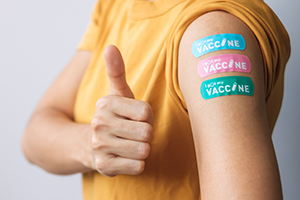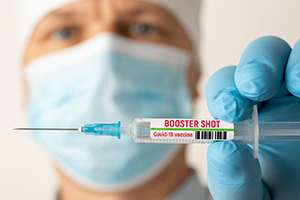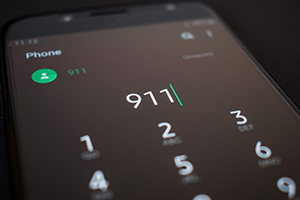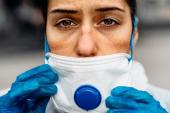COVID-19: TCTMD’s Dispatch for January Week 1
We’re curating a list of COVID-19 research and other useful content, and updating it regularly.

Since March 2020, TCTMD reporter Todd Neale has been writing up breaking news and peer-reviewed research related to COVID-19 every weekday. In July 2021, we transitioned to Mondays, Wednesdays, and Fridays. If you have something to share, tell us. All of our COVID-19 coverage can be found on our COVID-19 Hub.
January 7, 2022
Omicron is putting hospitals in crisis globally as case counts surge, surpassing 300 million worldwide, although the tally is increasingly meaningless, the New York Times reports. British troops have been deployed to help out at overrun facilities in the UK. In France, President Emmanuel Macron is doubling down on his efforts to get vaccines into the arms of skeptics, saying he is willing to “piss off” vaccine holdouts by making it even harder for them to access public spaces. In India, pandemic fatigue, déjà vu, and inconsistent political messaging are complicating efforts to tackle the Omicron wave.
In South Africa, however, authorities are relaxing some COVID-19 restrictions implemented to confront the Omicron wave. “The country’s Department of Health reported a 29.7% fall in the number of new cases detected in the week ending 25 December 2021 (89,781) from the previous week (127,753),” a BMJ news story explains. “Cases have declined in all provinces except Western Cape (up 14%) and Eastern Cape (up 18%), and hospital admissions have declined in all provinces except Western Cape.”
Omicron may be dominating headlines, but the Delta variant is still leaving its mark. New research in the New England Journal of Medicine looking at SARS-CoV-2 transmission among vaccinated subjects indicates that people who become infected with the Delta strain after being double-vaccinated with either the Oxford/AstraZeneca or Pfizer/BioNTech vaccine can still transmit the illness and that transmissions postvaccination are higher with Delta than with the earlier Alpha variant.
 On Thursday, the US Centers for Disease Control and Prevention’s Advisory Committee on Immunization Practices (ACIP), voted 13-1 to include adolescents ages 12 to 17 in the group of people who should get a COVID-19 booster, despite lingering concerns that doing so might increase the number of rare cardiovascular side effects, including myocarditis and pericarditis. The lone dissenting vote, Helen Keipp Talbot, MD, said she wasn’t “against” boosters. “I just really want the US to move forward with vaccinating all kids so that all kids can go back to a normal life,” she said. “And I don’t think it’s fair to the 12- to 17-year-olds who have been vaccinated to risk myocarditis again for an unknown benefit because their colleagues won’t get vaccinated.” TCTMD’s Todd Neale has the story.
On Thursday, the US Centers for Disease Control and Prevention’s Advisory Committee on Immunization Practices (ACIP), voted 13-1 to include adolescents ages 12 to 17 in the group of people who should get a COVID-19 booster, despite lingering concerns that doing so might increase the number of rare cardiovascular side effects, including myocarditis and pericarditis. The lone dissenting vote, Helen Keipp Talbot, MD, said she wasn’t “against” boosters. “I just really want the US to move forward with vaccinating all kids so that all kids can go back to a normal life,” she said. “And I don’t think it’s fair to the 12- to 17-year-olds who have been vaccinated to risk myocarditis again for an unknown benefit because their colleagues won’t get vaccinated.” TCTMD’s Todd Neale has the story.
On Friday, the US Food and Drug Administration, following a similar move taken earlier this week for the Pfizer/BioNTech vaccine, announced that it was amending the emergency use authorization for the Moderna jab, shortening the recommended interval between the second and booster doses to 5 months, down from 6. “Today’s action also brings consistency in the timing for administration of a booster dose among the available mRNA vaccines,” Peter Marks, MD, PhD, director of the FDA’s Center for Biologics Evaluation and Research, said in a statement. “Vaccination is our best defense against COVID-19, including the circulating variants, and shortening the length of time between completion of a primary series and a booster dose may help reduce waning immunity.”
More and more people—and scientists—are puzzling over the accuracy of rapid tests in the face of Omicron, with data emerging to back up their concerns that false-negatives may be helping spread the illness. A small study, not yet peer-reviewed, published to medRxiv, suggests that rapid antigen tests may be less likely to identify Omicron in the early days of infection, a window when the virus could still be transmitted to others. Both the New York Times and STAT explore the growing doubts about rapid tests, with STAT’s Matthew Herper delving into the scramble by researchers to understand the disconnect between positive cases and negative tests.
A Canadian study, however, published as a research letter in JAMA, concludes that the rate of false-positive results with rapid antigen tests used for workplace testing across Canada “was very low, consistent with other, smaller studies.” Researchers conclude: “These results inform the discussion of whether rapid antigen tests will result in too many false-positives that could overwhelm PCR testing capacity in other settings.”
 Statins are safe, but they aren’t protective against adverse outcomes in COVID-19 patients admitted to the ICU, results from the randomized INSPIRATION-S trial conclude. Published today in the BMJ, INSPIRATION-S compared atorvastatin 20 mg daily with placebo and found no difference in rates of arterial thrombosis, extracorporeal membrane oxygenation, or all-cause mortality within 30 days of randomization (33% vs 36%; OR 0.84; 95% CI 0.58-1.21). There were, however, positive signs for patients who presented to the ICU earlier in the course of COVID-19, lead author Behnood Bikdeli, MD, told TCTMD’s Caitlin Cox. “I think that’s encouraging. Maybe it has to do with timing: if people are presenting so late, there’s really not much to reverse with an oral medication. That’s a working hypothesis.”
Statins are safe, but they aren’t protective against adverse outcomes in COVID-19 patients admitted to the ICU, results from the randomized INSPIRATION-S trial conclude. Published today in the BMJ, INSPIRATION-S compared atorvastatin 20 mg daily with placebo and found no difference in rates of arterial thrombosis, extracorporeal membrane oxygenation, or all-cause mortality within 30 days of randomization (33% vs 36%; OR 0.84; 95% CI 0.58-1.21). There were, however, positive signs for patients who presented to the ICU earlier in the course of COVID-19, lead author Behnood Bikdeli, MD, told TCTMD’s Caitlin Cox. “I think that’s encouraging. Maybe it has to do with timing: if people are presenting so late, there’s really not much to reverse with an oral medication. That’s a working hypothesis.”
The US Supreme Court is mulling the legality of pandemic-related vaccine-or-test mandates for large businesses, with conservative justices opposing President Joe Biden's rule, which applies to businesses with at least 100 workers, and questioning whether such sweeping emergency measures can be levied at the federal level. As Reuters reports, the temporary legislation affects at least 80 million employees, while a separate vaccine requirement affects more than 10 million healthcare workers. COVID-19 “is by far the greatest public health danger that this country has faced in the last century. More and more people are dying every day. More and more people are getting sick every day. . . . And this is the policy that is most geared to stopping all this,” liberal Justice Elena Kagan is quoted in the article.
 A retrospective study making headlines today, published this week in Obstetrics & Gynecology, suggests that COVID-19 vaccinations may be slightly extending the menstrual cycle, but not the length of menstrual periods. “Our findings are reassuring,” the authors conclude. “We find no population-level clinically meaningful change in menstrual cycle length associated with COVID-19 vaccination. Our findings support and help explain the self-reports of changes in cycle length. Individuals receiving two COVID-19 vaccine doses in a single cycle do appear to experience a longer but temporary cycle length change.”
A retrospective study making headlines today, published this week in Obstetrics & Gynecology, suggests that COVID-19 vaccinations may be slightly extending the menstrual cycle, but not the length of menstrual periods. “Our findings are reassuring,” the authors conclude. “We find no population-level clinically meaningful change in menstrual cycle length associated with COVID-19 vaccination. Our findings support and help explain the self-reports of changes in cycle length. Individuals receiving two COVID-19 vaccine doses in a single cycle do appear to experience a longer but temporary cycle length change.”
January 5, 2022
On Tuesday, the US Centers for Disease Control and Prevention announced revised recommendations for booster shot timing for people vaccinated with the Pfizer/BioNTech jab, shortening the recommended interval from 6 to 5 months. “This means that people can now receive an mRNA booster shot 5 months after completing their Pfizer/BioNTech primary series,” the announcement explains. “The booster interval recommendation for people who received the J&J vaccine (2 months) or the Moderna vaccine (6 months) has not changed.” The CDC is also recommending that moderately or severely immunocompromised 5- to 11-year-old children get a third primary dose of vaccine 28 days after their second shot. Of note, the Pfizer/BioNTech vaccine is the only one currently authorized for emergency use in this age group.
The CDC’s Advisory Committee on Immunization Practices (ACIP), meanwhile, is meeting today to discuss the FDA’s decision to expand the use of the Pfizer/BioNTech vaccine’s booster dose to children ages 12 to 15 and is scheduled to vote on a recommendation before 5 PM today. The meeting is being broadcast live.
 Countries around the world are facing a testing shortage as the highly transmissible Omicron strain tears through populations, producing symptoms that are in many cases similar to those of the common cold. A Reuters story recaps how different nations are struggling to meet demands for tests and for whom they are prioritizing their use.
Countries around the world are facing a testing shortage as the highly transmissible Omicron strain tears through populations, producing symptoms that are in many cases similar to those of the common cold. A Reuters story recaps how different nations are struggling to meet demands for tests and for whom they are prioritizing their use.
President Joe Biden says the United States has doubled its order of Pfizer’s COVID-19 drug, nirmatrelvir/ritonavir (Paxlovid) as infections soar, “so it has enough courses for 20 million people,” NBC News reports. The FDA cleared the combination antiviral on December 22, 2021, for emergency use on the basis of the EPIC-HR study, but the drug so far has been in scarce supply. This as the US set a new global record for new cases in a single day—more than 1 million, Bloomberg notes.
At least some of those positive cases are being picked up incidentally. As a story in Becker’s Hospital Review details, in many parts of the US the majority of COVID-19-positive patients in the hospital are there for other reasons—COVID-19 being diagnosed upon admission. The finding is prompting hospitals to rethink the way they report positive cases so as to distinguish between hospitalization “with” versus “for” COVID-19.
In Ontario, Canada, deferred diabetic foot screening and delays in timely care for acute foot-related complications of diabetes have not led to an increase in limb loss. According to a cohort study published today in JAMA Network Open, of more than 1.4 million adults with diabetes, there were no differences in “demographic characteristics and comorbidities among patients undergoing leg amputation during the pandemic compared with those who underwent amputation in 2019 to 2020.”
A new analysis in JAMA Internal Medicine confirms that lotteries might not be a winning strategy for upping vaccination rates. After the state of Ohio announced its lottery system to incentivize vaccination rates in May of 2021, another 14 states followed suit. A close look at vaccination trends, however, indicates that the number of people getting their jabs in the 15 states with lotteries were no better than those in 31 non-lottery states, both before and after the lotteries opened. “Given the lack of a strong association between state lottery-based vaccine incentives and increased vaccination rates, further studies of strategies to increase vaccination rates are needed,” the authors conclude.
Rio De Janeiro has canceled its Carnival street parades for the second year in a row out of concerns for Omicron’s spread (Reuters).
 A Belgian research station in Antarctica is battling a COVID-19 outbreak. “Since mid-December, 11 of the 33 workers at Belgium’s Princess Elisabeth Polar Station have tested positive for the virus,” ABC News reports. All cases to date have been mild and occurred in people who’d been fully vaccinated or boosted.
A Belgian research station in Antarctica is battling a COVID-19 outbreak. “Since mid-December, 11 of the 33 workers at Belgium’s Princess Elisabeth Polar Station have tested positive for the virus,” ABC News reports. All cases to date have been mild and occurred in people who’d been fully vaccinated or boosted.
January 3, 2022
Cities around the world rang in the New Year by canceling traditional festivities for the second year in a row or offering more-subdued celebrations: Sky News recaps the night globally, noting that just “15,000 people in the Big Apple gathered to watch the traditional ball drop in Times Square, far fewer than the usual tens of thousands who usually descend on the area.”
There is “growing evidence” that the Omicron strain of COVID-19 produces less-severe illness than that seen in earlier surges, with experts noting that hospitalizations are not rising nearly as fast as infections. “Still, the case numbers remain staggering,” the New York Times reports. “The world is recording an average of nearly 1.5 million new cases every day, twice as many per day as were recorded nearly a week ago,” although holiday closures may have impacted reporting.
Predictions suggest that the Omicron wave could peak in mid-January, but in the meantime, soaring infection rates are causing major disruptions to healthcare. In New York City, one-third of EMS staff members are on medical leave, NBC News reports, while hospital staffing shortages are limiting the ability to admit patients and administer tests. EMS staff have been instructed that stable patients “with influenza-like illness . . . should not be transported to a 9-1-1-receiving facility” unless they are over age 65, have a high fever, or have underlying comorbidities (New York Post).
In the Cleveland Clinic health system alone, positive test results sidelined 3,000 healthcare workers as of December 30. In the UK, the National Health System is facing a mounting crisis, with Prime Minister Boris Johnson warning that the dire shortages will only escalate in the coming weeks (Guardian).
Data published in JAMA last week are bolstering hopes that Omicron is causing less-severe illness. A comparison of the fourth, Omicron-driven wave in South Africa with the three prior waves of COVID-19 at 49 acute care centers indicates that Omicron is leading to fewer overall hospitalizations, but patients are younger, have fewer comorbidities, and are more likely to be female. The majority are unvaccinated. Far fewer patients are requiring oxygen therapy and mechanical ventilation in wave four, and hospital stays have been shorter. “Further research is needed to determine if the differences between waves are affected by preexisting acquired or natural immunity (44.3% of the adult South African population was vaccinated as of December 2021 and > 50% of the population has had previous exposure to SARS-CoV-2) or if Omicron may be less pathogenic than previous variants,” researchers conclude.
 Also promising: a research letter published in the New England Journal of Medicine indicates that while Omicron “shows an unprecedented degree of neutralizing antibody escape,” both a third dose of an mRNA vaccine or full vaccination on top of prior COVID-19 infection appear to provide “a substantial gain in neutralizing activity” and can protect against the variant.
Also promising: a research letter published in the New England Journal of Medicine indicates that while Omicron “shows an unprecedented degree of neutralizing antibody escape,” both a third dose of an mRNA vaccine or full vaccination on top of prior COVID-19 infection appear to provide “a substantial gain in neutralizing activity” and can protect against the variant.
Similarly, a preprint study, now available as an abstract ahead of full publication in Nature, offers new evidence that at least three exposures to COVID-19 are required to provide a robust defense against Omicron. The study looked at serum neutralizing and binding activity against the original SARS-CoV-2 strain, the Beta strain (B.1.351), and the Omicron strain (B.1.1.529) in volunteers who had recovered from COVID-19, had two doses of an mRNA vaccine, had full vaccination plus an mRNA booster, had prior COVID-19 plus full vaccination, or had COVID-19 plus full vaccination and a booster. Serum analyses revealed that patients recovered from COVID-19, as well as patients who’d received two doses of an mRNA vaccine, had no or minimal serum neutralizing activity against Omicron. Those who’d been boosted had some attenuation of activity against Omicron as compared with the wild-type strain, but the reduction was less than that seen in the non-boosted and unvaccinated subjects.
Of note, Israel today became the first country to recommend a fourth dose of an mRNA vaccine for anyone over the age of 60. The prior focus was on older people with compromised immune systems and healthcare workers.
At the other end of the spectrum, the US Food and Drug Administration has extended emergency use authorization of a Pfizer/BioNTech vaccine booster to children ages 12 to 15. Whether the Center for Disease Control and Prevention’s Advisory Committee on Immunization Practices, expected to meet this week, ultimately recommends the additional jab or merely offers it as an option—given the slightly higher risks of pericarditis and myocarditis in younger people—remains to be seen, as a STAT story explains.
 In a promising sign that both hospitals and patients learned some lessons from the fear and shutdowns of the pandemic’s first wave, Medicare beneficiaries “experienced limited care access during the initial stage of the COVID-19 pandemic but have improved care access over time.” Researchers writing in JAMA Health Forum, who conducted three separate surveys over the course of the pandemic, found that existing barriers to care were exacerbated by COVID-19—something policy makers should take note of both in addressing the backlog and planning for the future.
In a promising sign that both hospitals and patients learned some lessons from the fear and shutdowns of the pandemic’s first wave, Medicare beneficiaries “experienced limited care access during the initial stage of the COVID-19 pandemic but have improved care access over time.” Researchers writing in JAMA Health Forum, who conducted three separate surveys over the course of the pandemic, found that existing barriers to care were exacerbated by COVID-19—something policy makers should take note of both in addressing the backlog and planning for the future.
On Monday, in an action sure to affect hospitalized COVID-19 patients, the FDA announced that Covidien (Medtronic) is recalling its Puritan Bennett 980 (PB980) Series Ventilator, classifying the action as a class I recall. A capacitor manufacturing assembly error “may cause the ventilator to become inoperable or stop working as intended. If this occurs, this could result in the loss of ventilation and serious adverse events,” including hypercarbia, hypoxemia, neurological injury, or death.
TCTMD Managing Editor Shelley Wood contributed today’s Dispatch.
Todd Neale is the Associate News Editor for TCTMD and a Senior Medical Journalist. He got his start in journalism at …
Read Full Bio





Comments